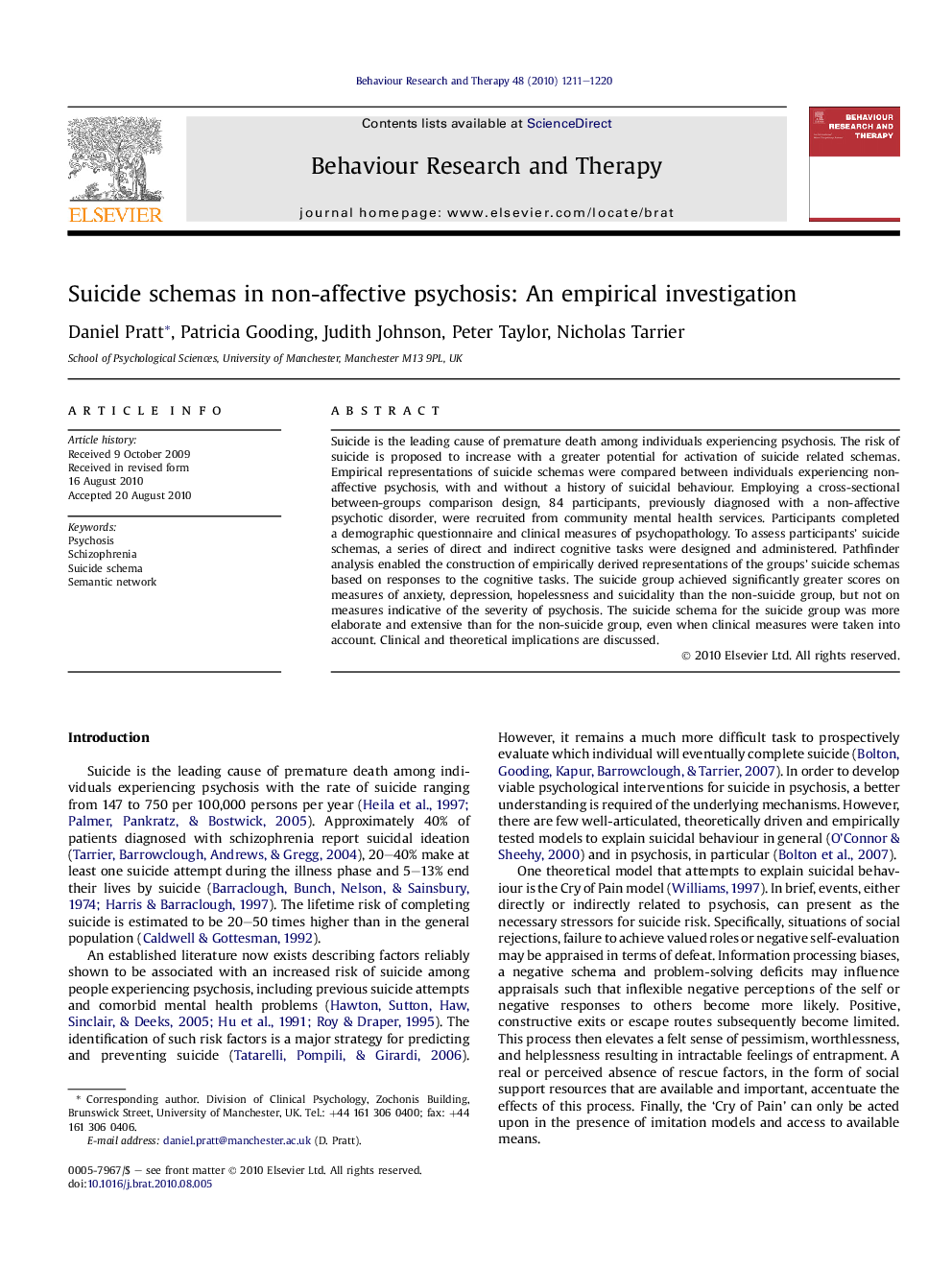| Article ID | Journal | Published Year | Pages | File Type |
|---|---|---|---|---|
| 902176 | Behaviour Research and Therapy | 2010 | 10 Pages |
Suicide is the leading cause of premature death among individuals experiencing psychosis. The risk of suicide is proposed to increase with a greater potential for activation of suicide related schemas. Empirical representations of suicide schemas were compared between individuals experiencing non-affective psychosis, with and without a history of suicidal behaviour. Employing a cross-sectional between-groups comparison design, 84 participants, previously diagnosed with a non-affective psychotic disorder, were recruited from community mental health services. Participants completed a demographic questionnaire and clinical measures of psychopathology. To assess participants’ suicide schemas, a series of direct and indirect cognitive tasks were designed and administered. Pathfinder analysis enabled the construction of empirically derived representations of the groups’ suicide schemas based on responses to the cognitive tasks. The suicide group achieved significantly greater scores on measures of anxiety, depression, hopelessness and suicidality than the non-suicide group, but not on measures indicative of the severity of psychosis. The suicide schema for the suicide group was more elaborate and extensive than for the non-suicide group, even when clinical measures were taken into account. Clinical and theoretical implications are discussed.
